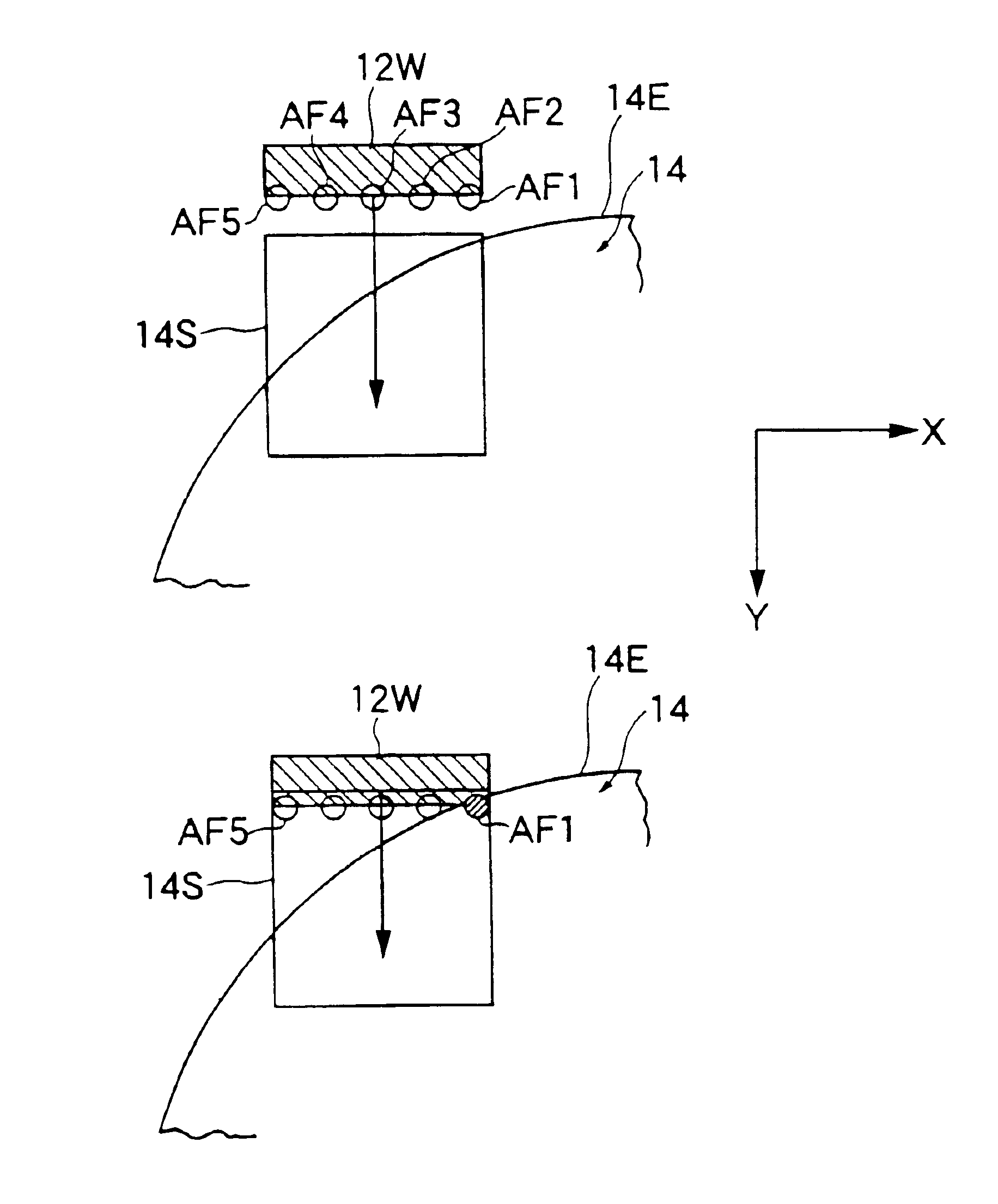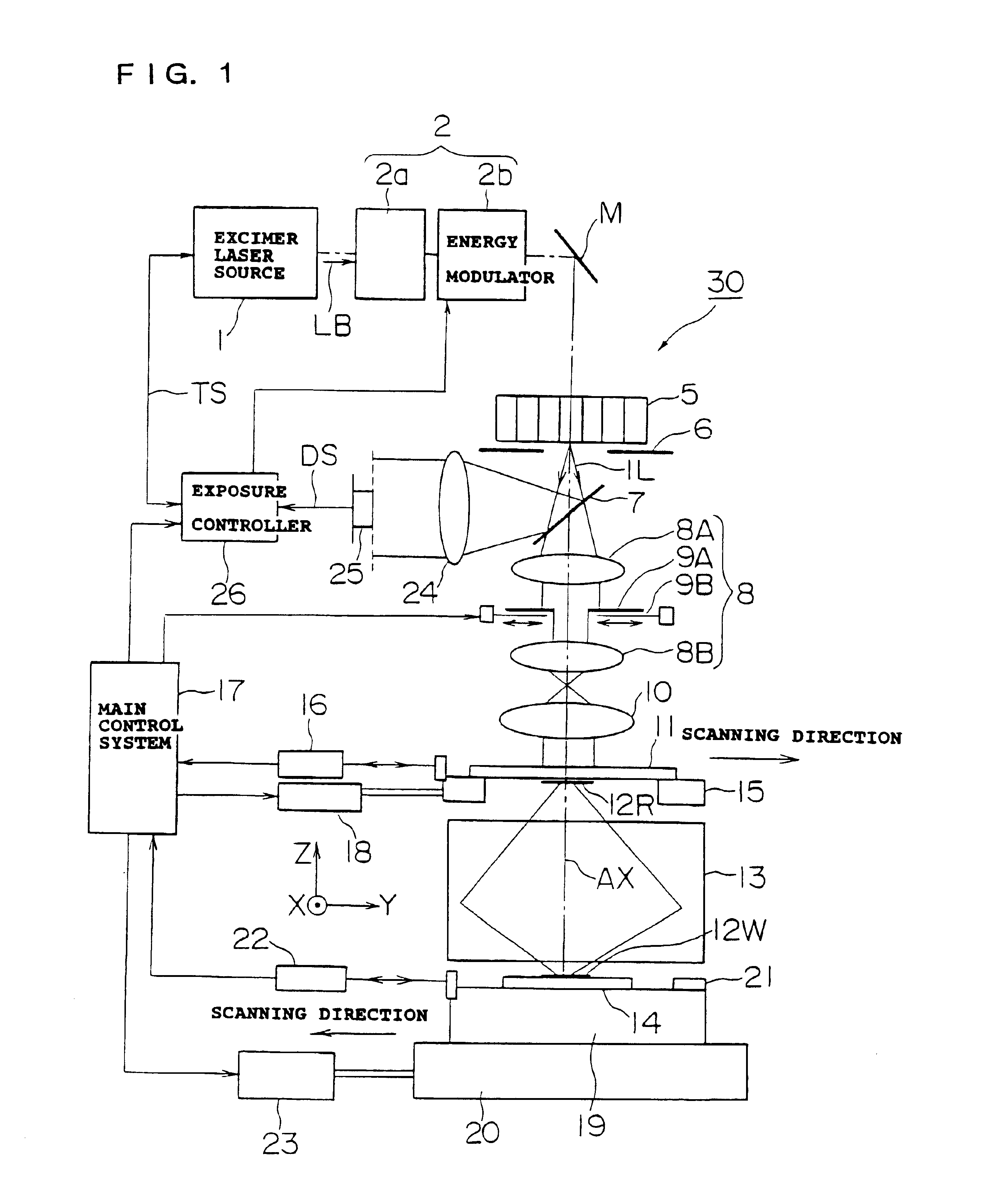Exposure apparatus, exposure method and process for producing device
- Summary
- Abstract
- Description
- Claims
- Application Information
AI Technical Summary
Benefits of technology
Problems solved by technology
Method used
Image
Examples
first embodiment
[0067]First, the overall configuration of an exposure apparatus according to a first embodiment of the present invention will be explained based on FIG. 1.
[0068]As shown in FIG. 1, the exposure apparatus 30 of the present embodiment has for example a KrF excimer laser (oscillation wavelength 248 nm) as the exposure light source 1. Note that as the exposure light source 1, it is also possible to use a metal vapor laser light source or a YAG laser harmonic generator or other pulse light source.
[0069]A light beam LB emitted in pulses from the exposure light source 1 strikes a beam shaping and modulation optical system 2. In the present embodiment, the beam shaping and modulation optical system 2 is comprised of a beam shaping optical system 2 and an energy modulator 2b. The beam shaping optical system 2a is comprised by a cylinder lens or a beam expander etc. The beam is shaped sectionally by these so as to efficiently strike the later fly-eye lens 5.
[0070]The energy modulator 2b is co...
second embodiment
[0097]The overall configuration of the exposure apparatus according to the second embodiment is similar to that of the exposure apparatus 30 shown in FIG. 1, but the technique of posture control of the Z-tilt stage 19 by the main control system 17 shown in FIG. 1 differs from the case of the embodiment shown in FIG. 4. In the following description, explanations overlapping with those of the exposure apparatus and exposure method according to the first embodiment will be partially omitted and the different portions will be explained in detail.
[0098]As shown in FIG. 5A, first, the system preselects measurement positions AF1 to AF5 of the row of AF sensors at the side closest to the wafer 14 first reaching the shot area 14S. Note that the five measurement positions AF1 to AF5 correspond to the five measurement positions 402-1 shown in FIG. 3A.
[0099]As shown in FIG. 5B, when the sensor AF1 reaching the surface of the wafer 14 first reaches the wafer 14, the system starts only focusing c...
third embodiment
[0102]The overall configuration of the exposure apparatus according to the third embodiment is similar to that of the exposure apparatus 30 shown in FIG. 1, but the technique of posture control of the Z-tilt stage 19 by the main control system 17 shown in FIG. 1 differs from the case of the embodiment shown in FIG. 4. In the following description, explanations overlapping with those of the exposure apparatus and exposure method according to the first embodiment will be partially omitted and the different portions will be explained in detail.
[0103]In the present embodiment, the main control system 17 shown in FIG. 1 is further provided with a determining means for determining a predetermined number df measurement positions to be selected by the AF sensor 45 shown in FIG. 2 based on which position at the periphery of the wafer 14 the shot area 14S of the wafer 14 shown in FIG. 6 is at. The predetermined measurement positions selected by the AF sensor are determined for each shot area....
PUM
 Login to View More
Login to View More Abstract
Description
Claims
Application Information
 Login to View More
Login to View More - R&D
- Intellectual Property
- Life Sciences
- Materials
- Tech Scout
- Unparalleled Data Quality
- Higher Quality Content
- 60% Fewer Hallucinations
Browse by: Latest US Patents, China's latest patents, Technical Efficacy Thesaurus, Application Domain, Technology Topic, Popular Technical Reports.
© 2025 PatSnap. All rights reserved.Legal|Privacy policy|Modern Slavery Act Transparency Statement|Sitemap|About US| Contact US: help@patsnap.com



